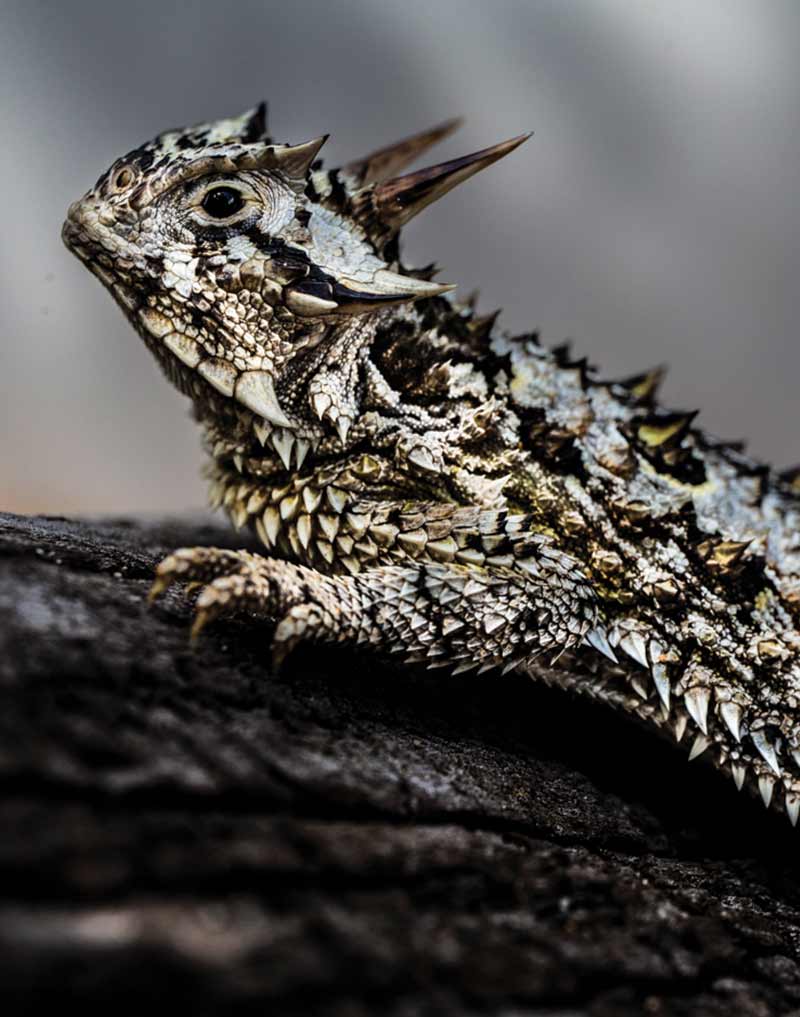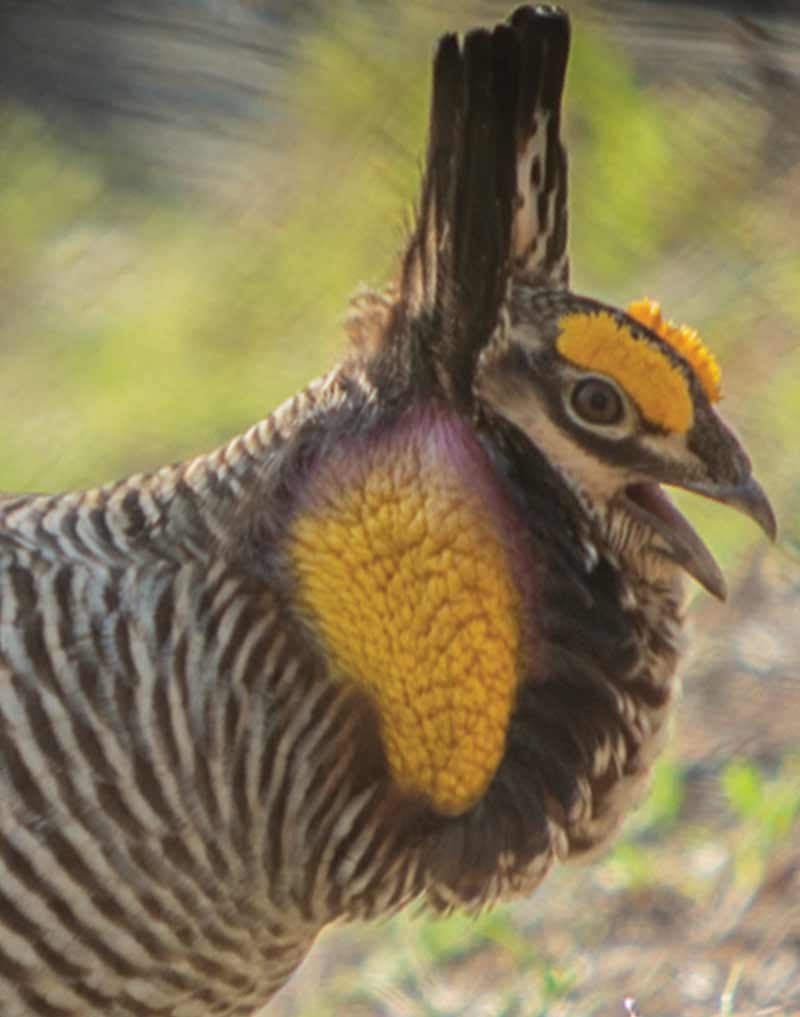For Animals. Forever.
While the Texas horned lizard and the Attwater’s prairie chicken might seem to have little in common, both are part of a conservation success story right here at the Caldwell Zoo. We collaborate on breeding programs with other organizations to help increase the populations of threatened species, including those from Texas. Our partnership with Texas Parks and Wildlife has been particularly fulfilling. We currently participate in two initiatives to breed and reintroduce local species back into the wild.

Texas Horned Lizards
The nickname of the Texas horned lizard is the “horny toad,” but it truly is a lizard. Its natural territory extends across much of the American southwest and into northern Mexico. These iconic reptiles are famous for their spiky skin that gives them the appearance of tiny dinosaurs.
Due to habitat loss, the number of horned lizards in the wild has greatly decreased over the past few decades. They are now listed as a “threatened” species. To help strengthen the population of these fascinating animals, the Caldwell Zoo has teamed up with the Texas Parks and Wildlife Department on a special breeding program. We’ve created a custom-built center that gives horned lizards everything they need to prosper: proper nutrition, protected space and peace and quiet. With the help of Parks and Wildlife personnel, we’ve matched pairs of horned lizards in hopes they would breed. It’s working! In August 2021, we welcomed the first baby horned lizards to hatch at our facility.
With each new hatchling, we strengthen the population and help the species thrive.

Attwater’s Prairie Chicken
The Atwatter’s prairie chicken is not a chicken at all. This lively bird is actually a type of grouse native to Texas and Louisiana. Its name comes from the coastal plains that serve as its natural habitat. These grasslands have been diminished by farming, ranching and development. As a result, the Attwater’s prairie chicken is considered one of the most endangered birds in North America. True to its mission, the Caldwell Zoo has joined forces with the U.S. Fish and Wildlife Service to help protect the species.
Special breeding programs were initiated in 1992 after public and private lands were designated as refuges for the prairie chickens. The number of wild birds had declined so greatly that the Caldwell Zoo agreed to set up a captive breeding facility on our campus. It takes special expertise to successfully breed these sensitive birds. They need nutritious diets, shelter away from predators and peace and quiet. Birds of breeding age are introduced and their eggs are monitored and incubated in our “brooder” house.
Once the chicks are strong enough to be on their own, experts from the Fish and Wildlife Service transport them to refuges and carefully reintroduce them into the wild. Over the years, the Caldwell Zoo has partnered with the Houston Zoo and Fossil Rim Wildlife Center to breed and release several hundred birds back into the wild. Now their numbers are increasing. It’s a long, delicate process, but we are determined to help these native birds so they can continue to strut their stuff.




